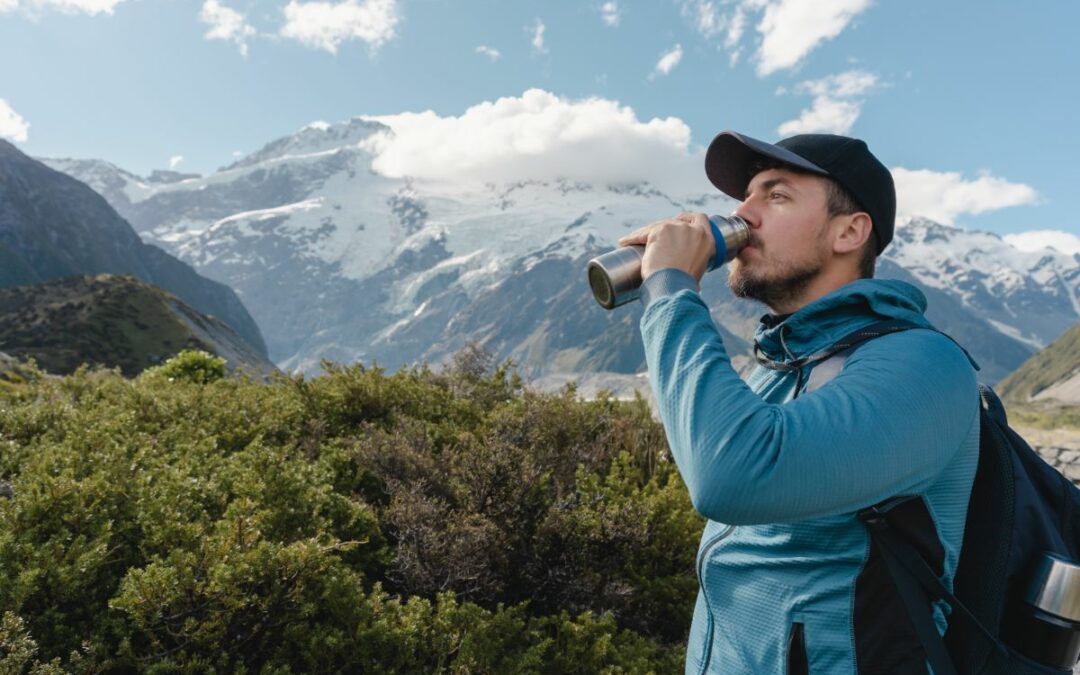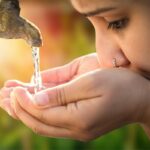Whether you are visiting Colorado for the first time or are one of the rare natives, high-altitude dehydration is a common problem for us all. This physiological response to high-altitude environments can significantly impact physical performance and overall health. This article will explore the science behind high-altitude dehydration, how this affects our bodies, and strategies to prevent and treat dehydration.
The Science Behind High-Altitude Dehydration
The Impact of Altitude on the Human Body
Venturing to high altitudes, typically 5,000 feet above sea level or more (the elevation of Colorado Springs is 6,033 feet), imposes a unique set of challenges on the human body. As the elevation rises, such as when traveling to the Rocky Mountains, the atmospheric pressure gets lower, leading to a reduction in the oxygen content of the air. This lack of oxygen forces the body to work harder and breathe faster, which in turn accelerates water loss via respiration.
Respiration and Dehydration
Did you know that your body loses water through respiration at high altitudes twice as fast as at sea level? This increased rate of water loss is due to the body’s effort to take in more oxygen, resulting in faster and deeper breathing. Consequently, the body loses more moisture through exhaled breath, leading to high-altitude dehydration. Furthermore, high-altitude locations are often arid climates characterized by low humidity and exposure to sun and wind, which can exacerbate water loss through evaporation from the skin.
High-Altitude Activities and Dehydration
Engaging in high-altitude activities in Colorado, such as the hiking and snow sports the state is famous for, can also influence the body’s hydration levels. These activities increase the metabolic rate and water loss through sweating and respiration. When you factor in the accompanying reduction in your body’s thirst response, you have the perfect conditions for high-altitude dehydration.
Dehydration and High-Altitude Sickness
Even those of us who are native to Colorado can suffer from altitude sickness when we increase our exercise or travel to higher mountain elevations. Several of the symptoms that characterize high-altitude dehydration include increased thirst, dry mouth, decreased urine output or dark yellow urine, headaches, and fatigue.
But dehydration at higher elevations is not just about losing water; it’s also about how the body responds to the loss. Some individuals may experience abnormal fluid retention, leading to conditions like acute mountain sickness (AMS), high-altitude cerebral edema (HACE), and high-altitude pulmonary edema (HAPE) . These conditions present with symptoms like headache, fatigue, nausea, shortness of breath, and even unconsciousness.
Fortunately, there are steps we can all take to prevent and treat dehydration at higher elevations.
You Might Like: Protect Yourself from Winter Dehydration in Colorado
Preventing High-Altitude Dehydration
 Hydration Strategies
Hydration Strategies
No surprise, one of the primary strategies to prevent high-altitude dehydration is to ensure adequate fluid intake. A good rule of thumb is to drink an additional 1-1.5 liters of water per day at high altitudes. This increases to 3-4 liters of water per day if venturing above 10,000 feet. Electrolyte Balance
Maintaining an electrolyte balance is also crucial in preventing dehydration at high altitudes. Electrolytes (think sodium, potassium, and magnesium) are vital for the body’s cellular processes, including fluid balance and muscle contractions. Therefore, consuming foods or drinks rich in these electrolytes can support hydration at high altitudes.
Regular Fluid Intake During Activities
Keeping a regular fluid intake during activities can also help prevent high-altitude dehydration. Opt for a few quick sips every 15-20 minutes during activity instead of taking large gulps only when you stop for a break.
Access to Clean Drinking Water
Ensuring you can access clean drinking water is crucial when trekking or camping at high altitudes. Carrying sufficient water for the entire trip, along with some extra in case of emergencies, is essential. If relying on water sources along the trail, knowing how to safely filter and treat the water to make it safe for drinking and the locations of water sources along your route are vital to staying hydrated. Before heading out, visit your local outdoor gear store for water bottles and filtration systems on the go.
Clearly Colorado: Your High-Altitude Hydration Partner
At Clearly Colorado, we understand the importance of staying hydrated, especially at high altitudes. As a family-owned and operated Southern Colorado business, we have been providing water created by nature and perfected by science since 1997.
Whether you’re planning a high(er)-altitude trek or want to maximize your health and well-being while living in high altitudes, we’re here to ensure you have access to high-quality, purified water to help you stay hydrated. With our reliable bottled water delivery service for offices and homes, you can trust us to meet your hydration needs year after year.
Contact us today to get started.


 Hydration Strategies
Hydration Strategies


